

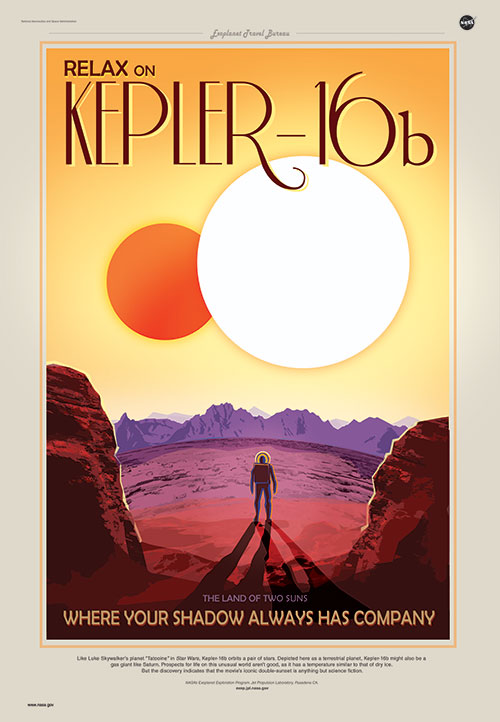
Some fanciful travel posters from NASA:
 |
 |
 |
The first exoplanet to be discovered is 51 Peg b (51 Peg is the name of the star, it is a Sun-like star). It was discovered using the velocity method. Its orbital period is 4 days (!) so it is only 0.05 AU from its star, much closer than Mercury is to the Sun. The mass of 51 Peg b is about 50% the mass of Jupiter, and its temperature is about 1200° K. There is no planet in the Solar System like this one!
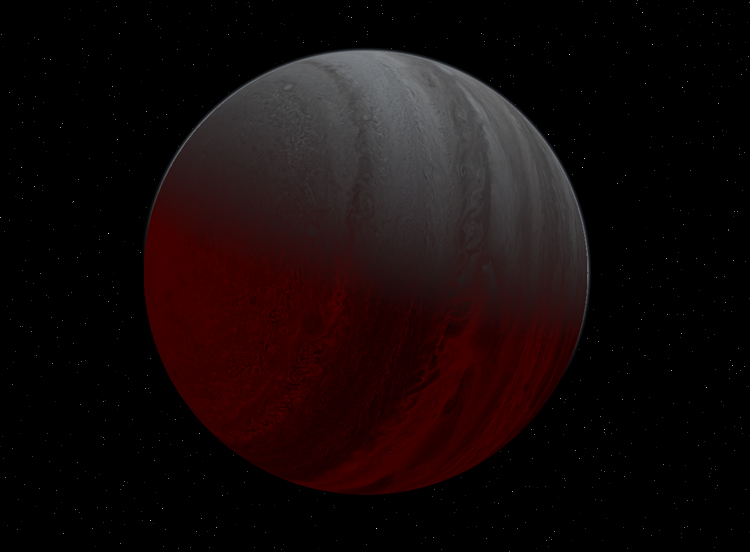 |
Artist's impression of a hot Jupiter. |
Why was such a planet the first to be found? Recall the observing biases: 1) more likely to find a planet with a short year; and 2) more likely to find a large planet because it causes large effects (either bigger velocity changes or deeper transits).
So in retrospect, it was not so surprising to find this type of planet first. We now think that such planets may have formed further from their star and migrated inwards (but it may be possible to form such a planet close to a star if an optimum size rocky core forms very early in the collapse of the cloud forming the system).
Important to note that a few Earth-like planets in the habitable zone have now been found!
The distribution of sizes of exoplanets found by the Kepler mission suggests that large planets are less common that small planets but beware of observational biases!



But note that Kepler 10b is way too hot to be Earth-like! More recent discoveries are more promising locations for life:
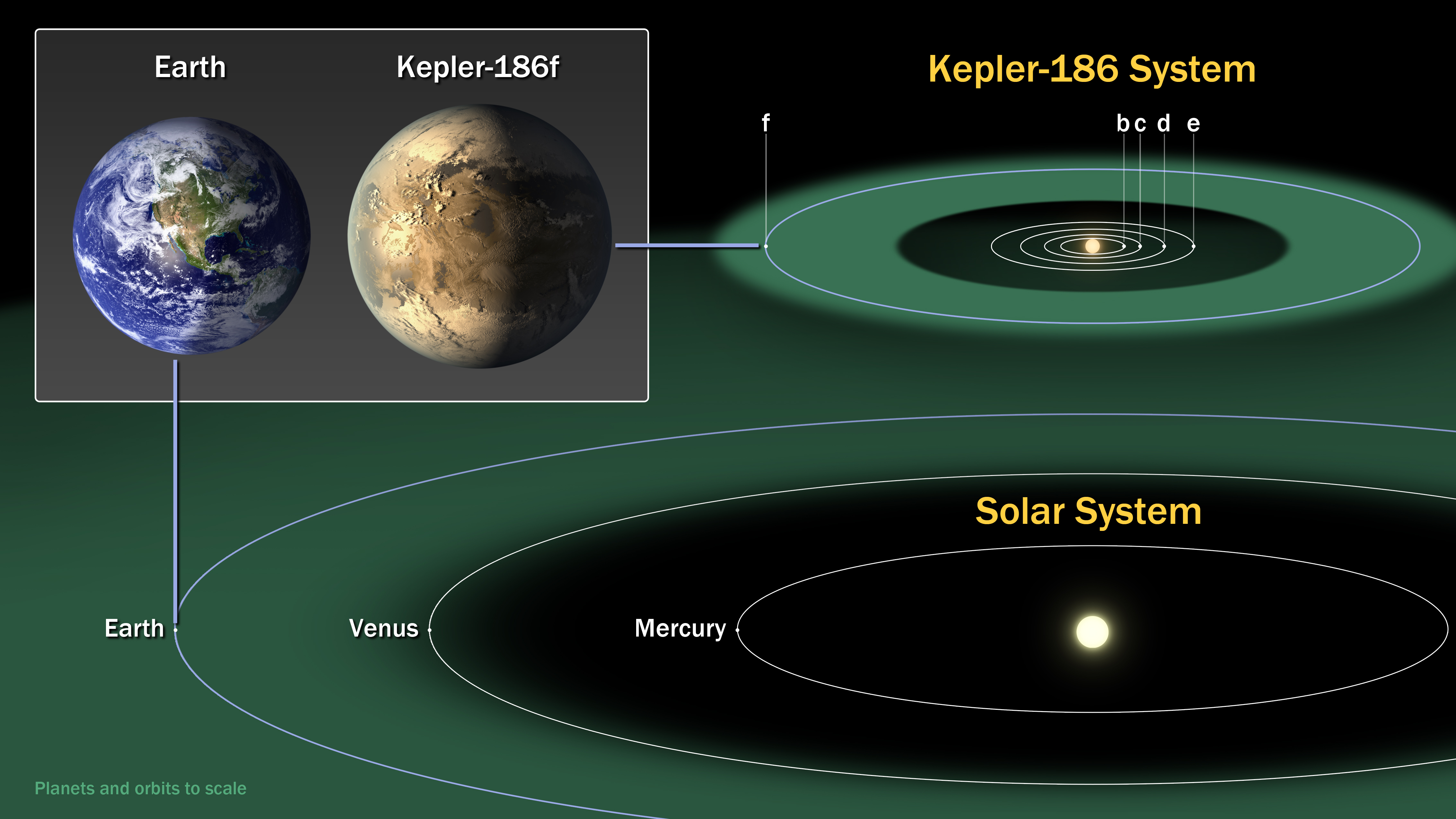

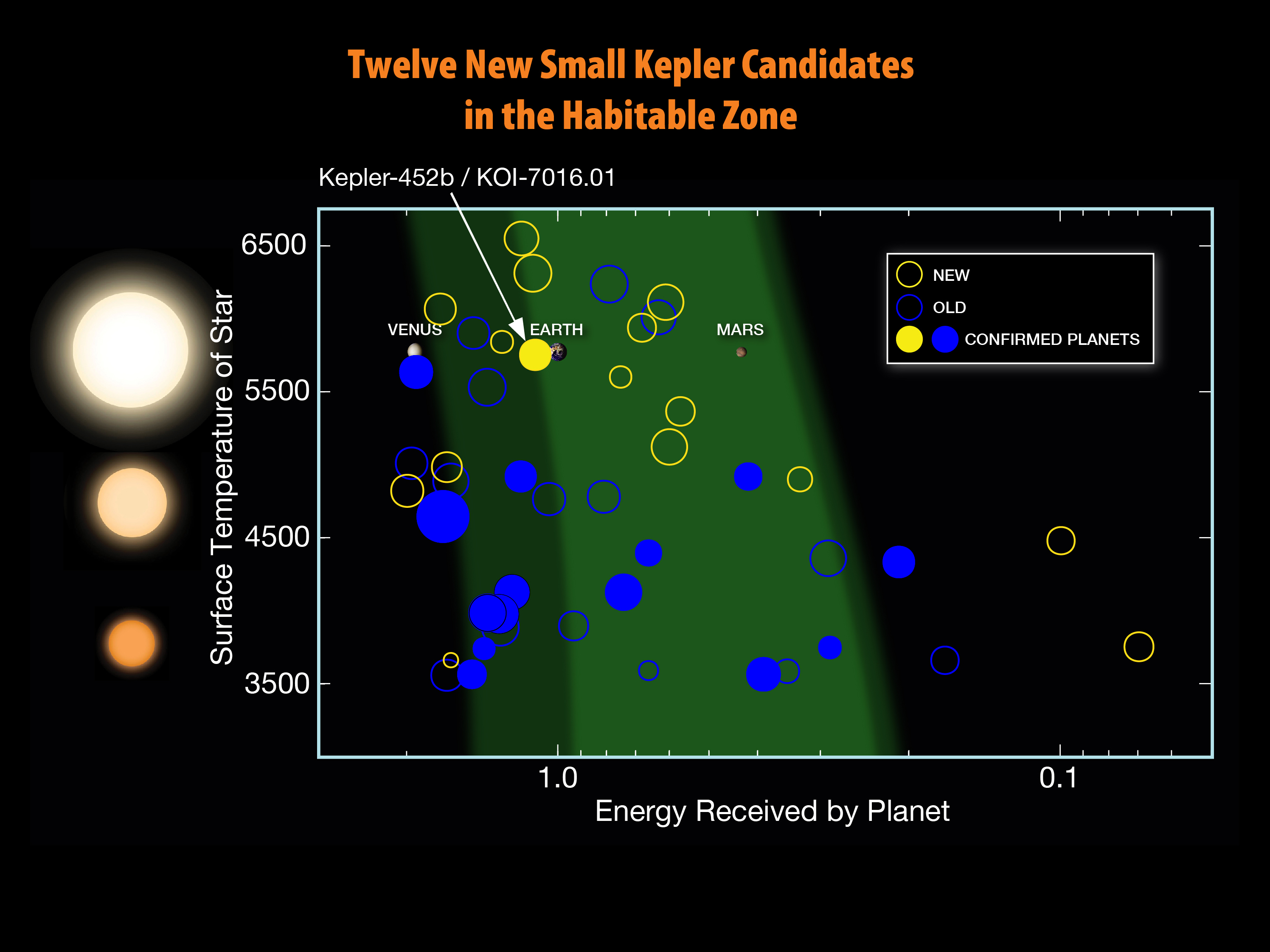
Artist's impression of comparing Earth and Kepler 452 b:

And last, a reasonably complete plot of all planet and planet candidates discovered through last year:
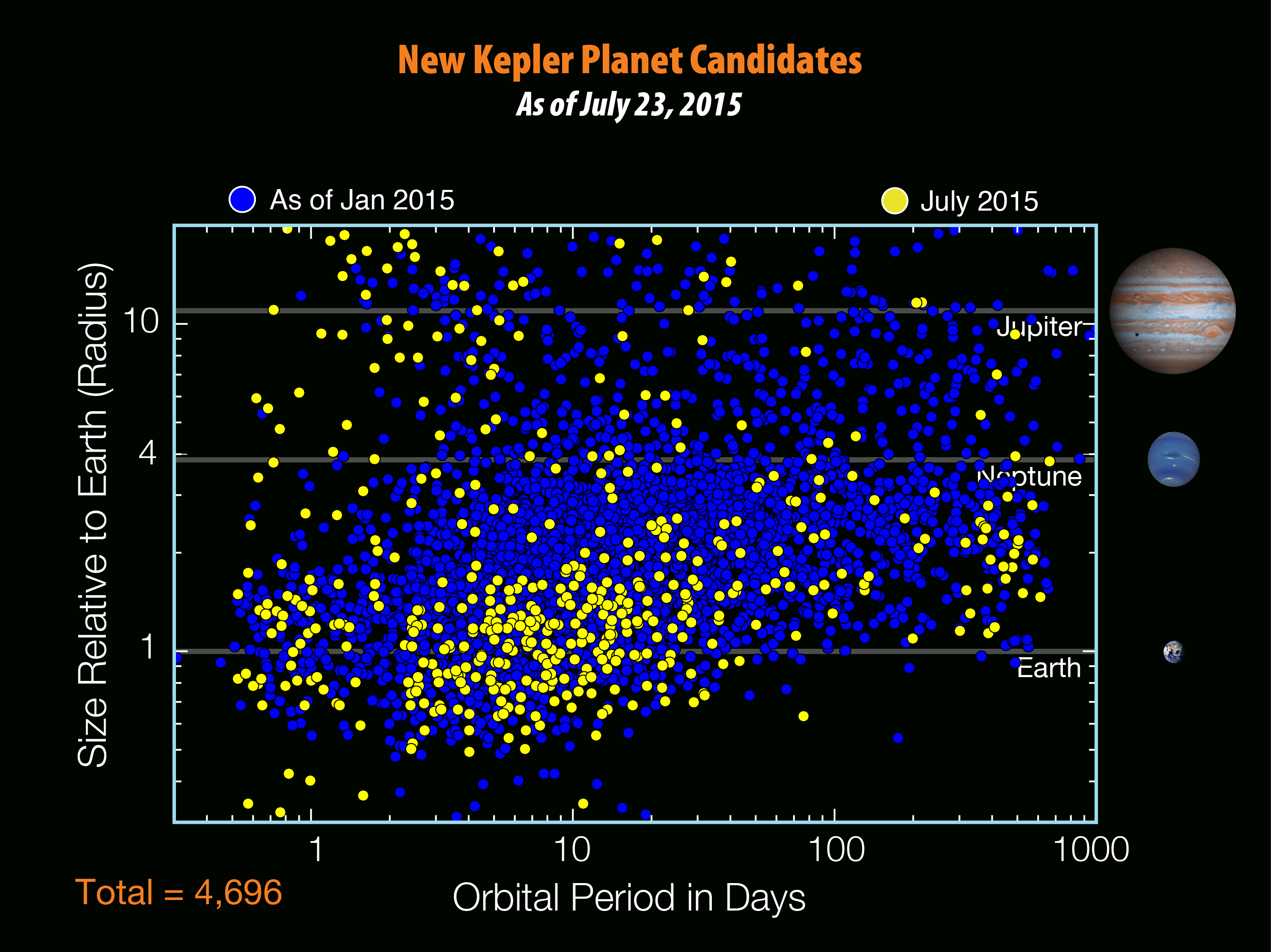
|
Two planetary systems from http://wordlesstech.com/exoplanet-hunter-finds-multi-planet-solar-systems/ |
Woolly Mammoth, symbol of the ice age, from http://news.nationalgeographic.com/news/ 2001/11/1101_WoolyMammoth.html |
|
Click to return to syllabus |
||
| Click to return to Comparison of Exoplanet Systems | hypertext |
Click to go to Long Term Climate |